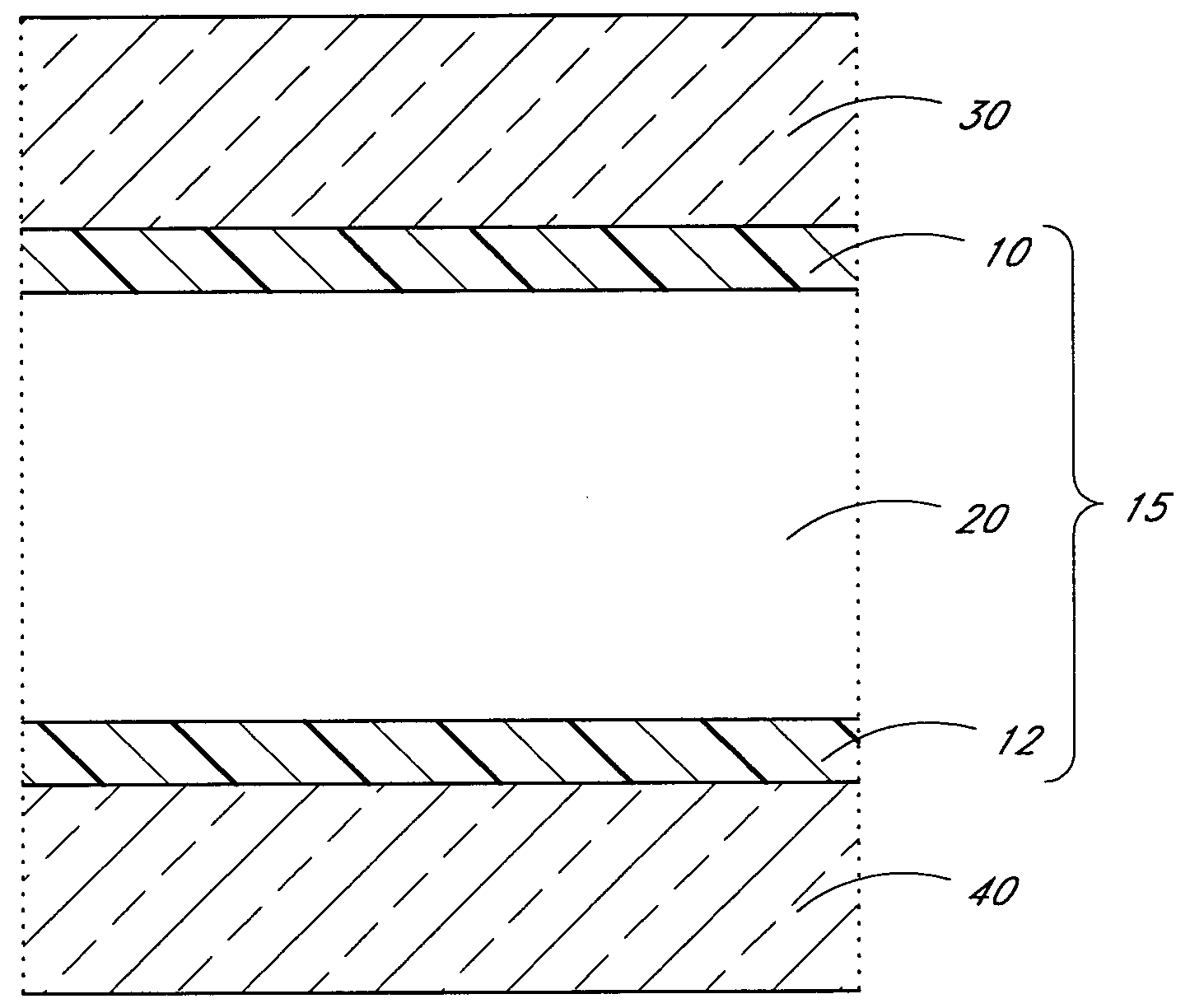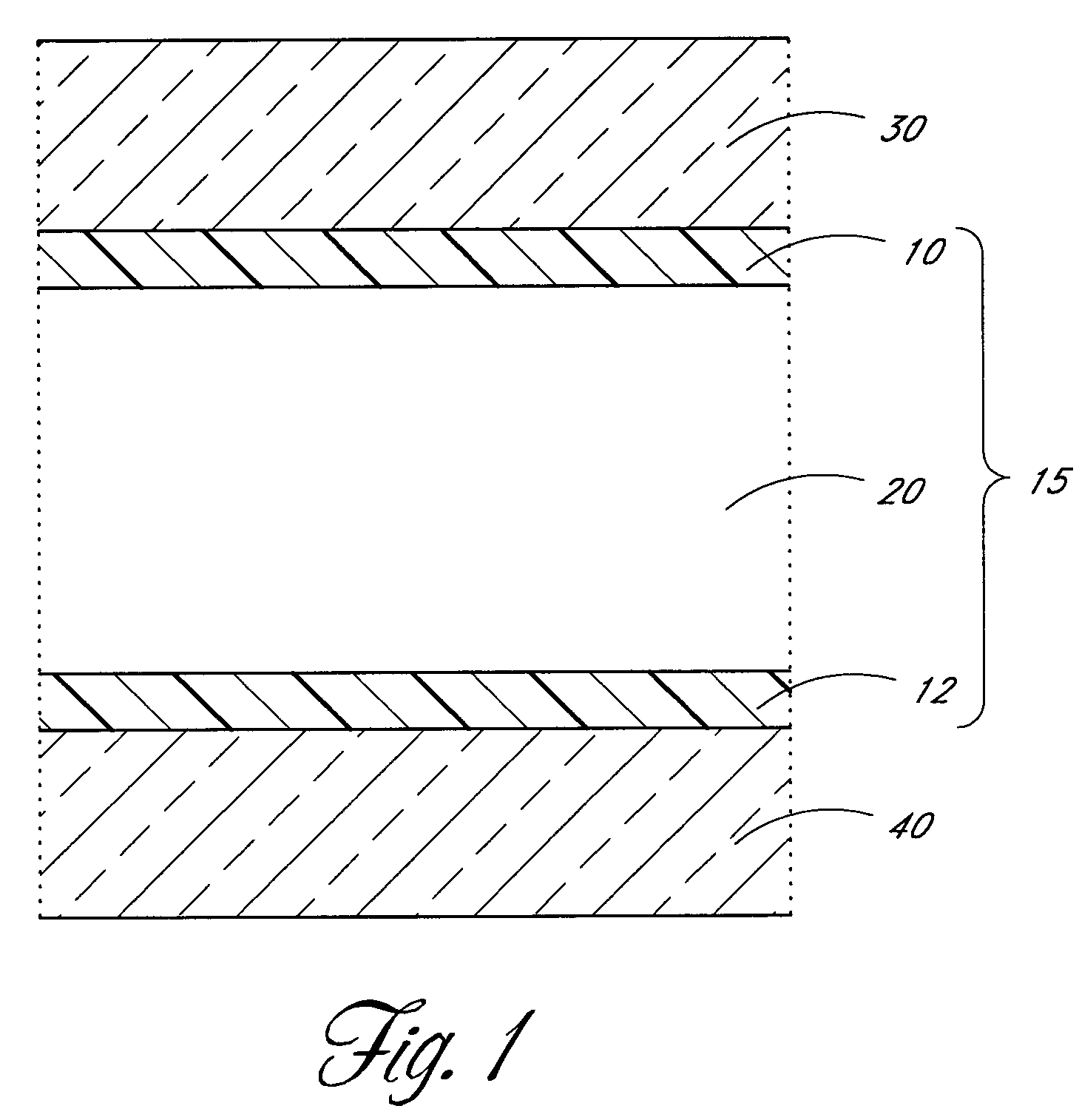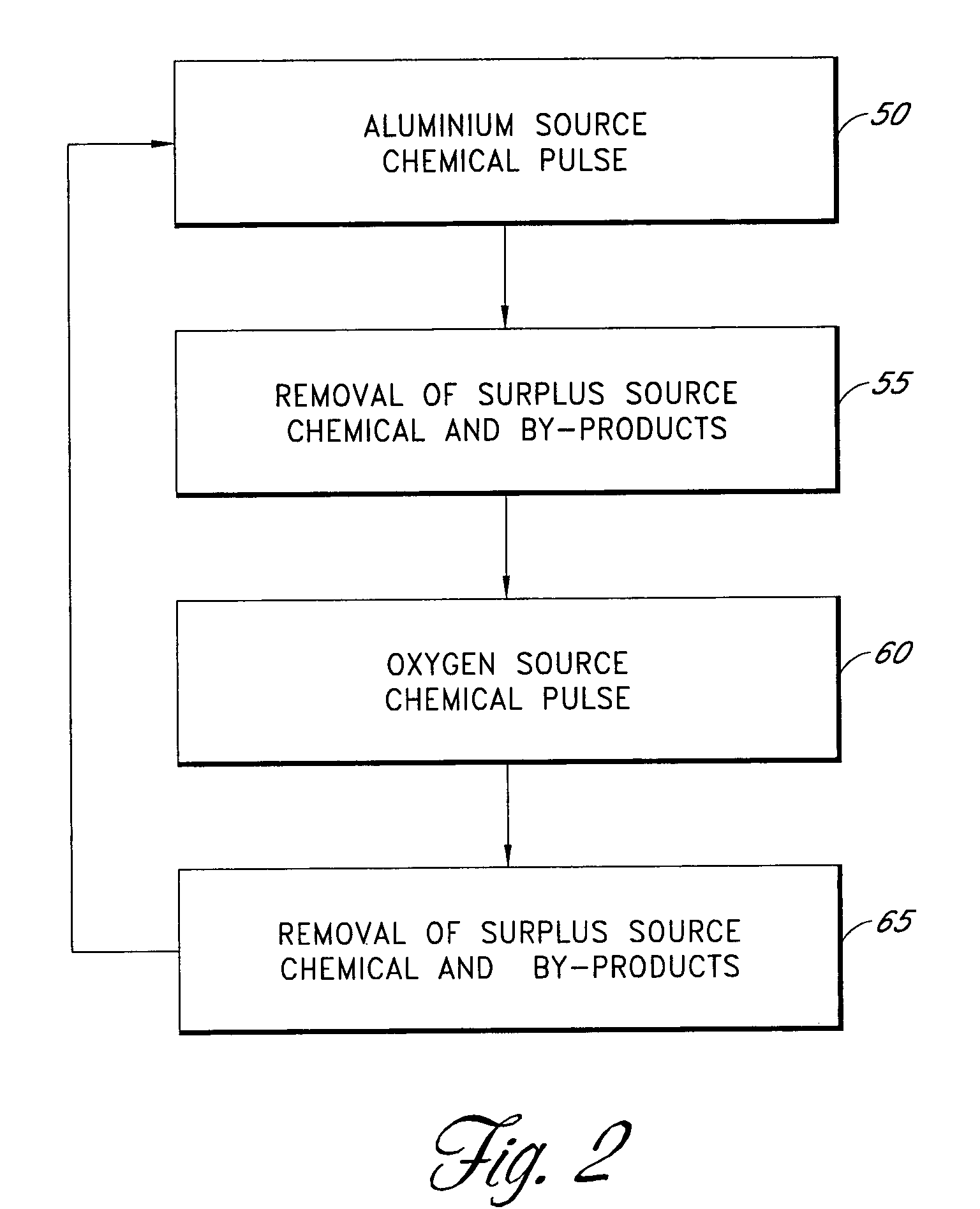Methods for making a dielectric stack in an integrated circuit
a technology of integrated circuits and dielectric stacks, which is applied in the direction of coatings, transistors, chemical vapor deposition coatings, etc., can solve the problems that dielectric stacks have been of little practical benefit for current commercial process flows, and achieve excellent interfacial properties, facilitate advanced materials, and speed up overall deposition rates
- Summary
- Abstract
- Description
- Claims
- Application Information
AI Technical Summary
Benefits of technology
Problems solved by technology
Method used
Image
Examples
example 1
ALD of Aluminum Oxide from (CH3)3Al and Water
[0066]With reference again to FIG. 2, in a preferred embodiment, the aluminum source pulse 50 comprises trimethyl aluminum or TMA) ((CH3)3Al) fed into the reaction space. TMA chemisorbs on hydroxyl (—OH) groups on the substrate surface. Methane is released as a byproduct. The self-saturating surface reaction leaves a methyl-terminated aluminum oxide layer on the surface. The removal 55 comprises flowing inert gas flow to purge residual TMA and methane from the reaction space. The oxygen source pulse 60 comprises a water pulse that reacts with the methyl groups on aluminum oxide. The self-saturating surface reaction leaves a hydroxyl-terminated aluminum oxide layer on the substrate surface and methane gas is released as a byproduct. The second removal 65 also comprises flowing inert gas to purge residual water and methane from the reaction space. The substrate surface is now ready to receive the next TMA pulse. Alternating TMA and H2O reac...
example 2
ALD Processes Using Aluminum Beta-Diketonates
[0076]Aluminum acetylacetonate, i.e. Al(acac)3, and tris-(2,2,6,6-tetramethyl-3,5-heptanedionato)aluminum, i.e. Al(thd)3, react slowly with water. In the process aluminum oxide is formed and Hacac or Hthd vapor is released. Faster surface reactions are possible when using ozone as an oxygen source. However, ozone is preferably used only for the growth of the top interfacial aluminum oxide layer, as noted above in the discussion of preferred oxygen source materials, to avoid oxidation of the underlying substrate.
example 3
Replacing a SiO2 Interface Layer with Al2O3 by an Exchange Reaction
[0077]An ALD reactor or a CVD reactor is used for the process. A substrate with a silicon dioxide surface is placed into the reaction space. The pressure can be atmospheric, but preferably the pressure of the reaction space is adjusted to about 1–10 mbar. The substrate temperature is adjusted to between about 300° C. and 400° C. Vaporized aluminum compound, preferably aluminum halide and more preferably aluminum chloride, is contacted with the substrate surface for about two minutes.
[0078]When AlCl3 vapor is contacted with a SiO2 surface, solid Al2O3 is formed on the surface and SiCl4 vapor is formed. The Gibb's free energy of this reaction is favorable for the formation of aluminum oxide.
1.5SiO2(s)+2AlCl3(g)→Al2O3(s)+1.5SiCl4(g) ΔGf(300° C.)=−52 kJ [ 2]
[0079]The completion of the exchange reaction can be monitored, e.g. with a quadrupole mass spectrometer located at the exhaust side of the reaction space. The react...
PUM
| Property | Measurement | Unit |
|---|---|---|
| Temperature | aaaaa | aaaaa |
| Time | aaaaa | aaaaa |
| Time | aaaaa | aaaaa |
Abstract
Description
Claims
Application Information
 Login to View More
Login to View More - R&D
- Intellectual Property
- Life Sciences
- Materials
- Tech Scout
- Unparalleled Data Quality
- Higher Quality Content
- 60% Fewer Hallucinations
Browse by: Latest US Patents, China's latest patents, Technical Efficacy Thesaurus, Application Domain, Technology Topic, Popular Technical Reports.
© 2025 PatSnap. All rights reserved.Legal|Privacy policy|Modern Slavery Act Transparency Statement|Sitemap|About US| Contact US: help@patsnap.com



